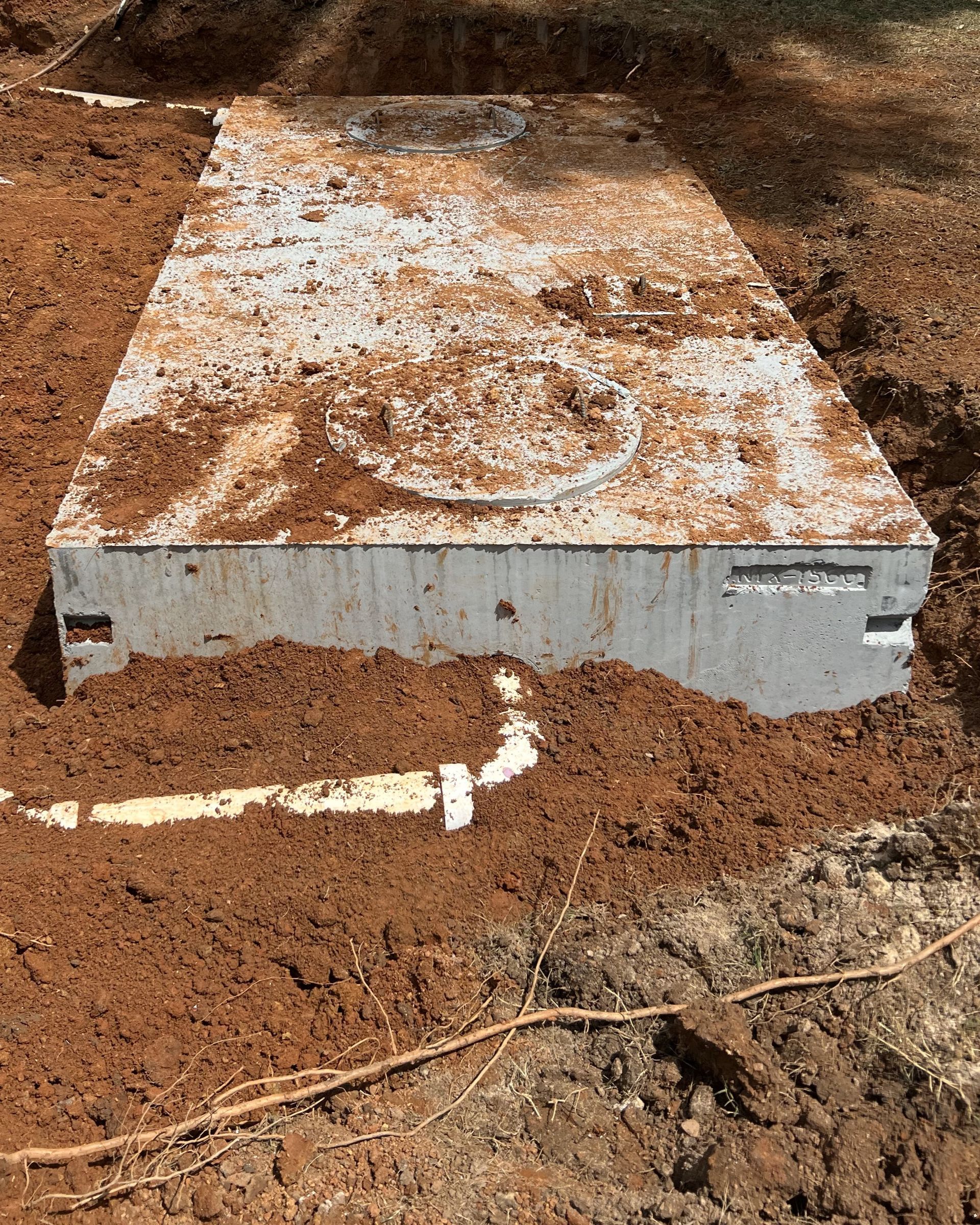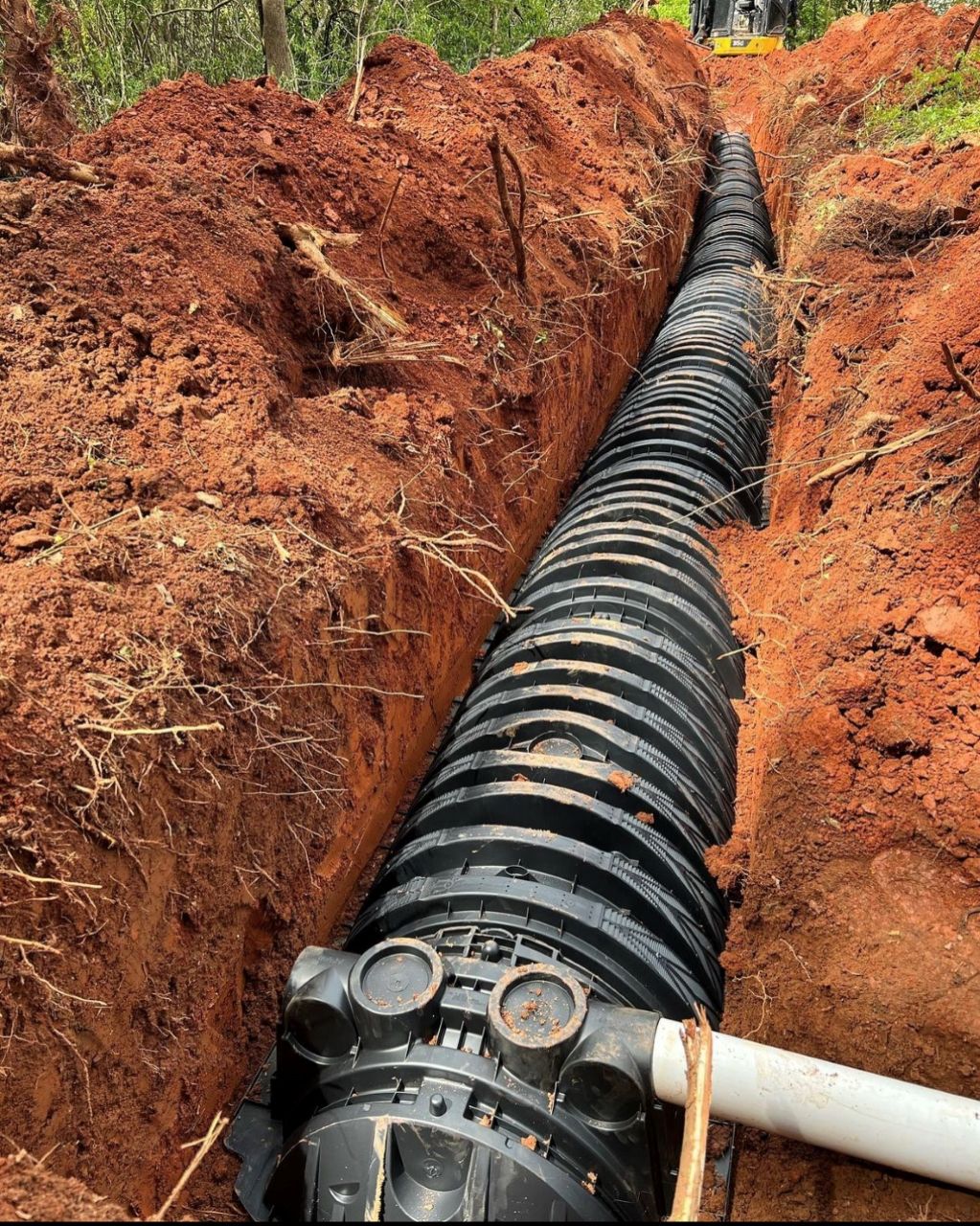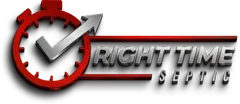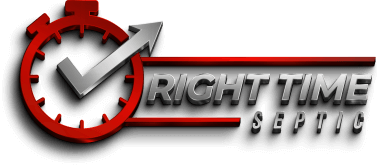Septic System Installation

Full Septic System Install
Welcome to our guide on septic tank installation! Septic tanks are an essential component of many homes and buildings that are not connected to a municipal sewer system. A septic tank collects and treats wastewater before releasing it into the surrounding soil. In this guide, we will walk you through the process of septic tank installation.
Percolation Test (If required)
Before installing a septic tank, you must determine whether the soil on your property can support a septic system. A percolation test (or perc test) is performed to measure the soil's ability to absorb water. A septic system's size is determined by the number of bedrooms in a house or the estimated amount of wastewater generated. A perc test is required to determine the size of the leach field, which is the area where the effluent is dispersed into the soil.
Obtain Permits and Approvals
Septic tank installation requires permits and approvals from the local health department or environmental agency. The septic system design and installation plan must meet local regulations and guidelines. It's essential to ensure that all necessary permits and approvals are obtained before installation.
Excavation and Installation
The installation process begins with excavating the ground for the septic tank and leach field. The septic tank is placed in the hole, leveled, and then backfilled with soil. The inlet and outlet pipes are connected to the tank, and the tank is sealed. The next step is to install the leach field chambers.
Inspection and Testing
After the installation is complete, the septic system must be inspected and tested to ensure it is functioning correctly. The inspection and testing process includes a visual inspection of the tank and leach field.
Maintenance
Proper maintenance is critical for the long-term performance of the septic system. Septic tanks require periodic septic tank pumping to remove accumulated solids and prevent blockages in the leach field. Additionally, avoid flushing non-degradable items such as paper towels, feminine hygiene products, or chemicals down the toilet, which can cause damage to the septic system.
In some cases, alternative systems such as aerobic treatment units (ATUs) or mound systems may be used in place of traditional leach fields to treat wastewater.


Leach Field Installation
Septic leachfield chambers are an essential component of a septic system. They work by allowing the effluent (wastewater) to percolate through the soil, where it is naturally filtered and treated. Leachfield chambers are made up of a series of interconnected plastic chambers that are buried underground.
The effluent flows from the septic tank to the leachfield chambers through perforated pipes that are connected to the inlet of the first chamber. The chambers are designed to provide a large surface area for the effluent to be dispersed into the soil, which allows for optimal treatment and filtration.
As the effluent flows through the leachfield chambers, it is distributed evenly across the soil. The soil acts as a natural filter, removing harmful pathogens, bacteria, and other contaminants. The effluent is also broken down by naturally occurring bacteria in the soil, which helps to further treat the wastewater.
The size and design of the leachfield chambers are determined by the number of bedrooms in a house or the estimated amount of wastewater generated. The size of the leachfield must be large enough to accommodate the volume of wastewater being generated without causing overloading or failure of the system.
Regular maintenance of the leachfield chambers is essential to ensure that they function properly. This includes periodic inspection and cleaning of the leachfield, as well as monitoring the system's performance to detect any signs of failure or problems. By following proper maintenance procedures, the lifespan of the leachfield chambers can be extended, and the septic system can continue to operate effectively for many years.
